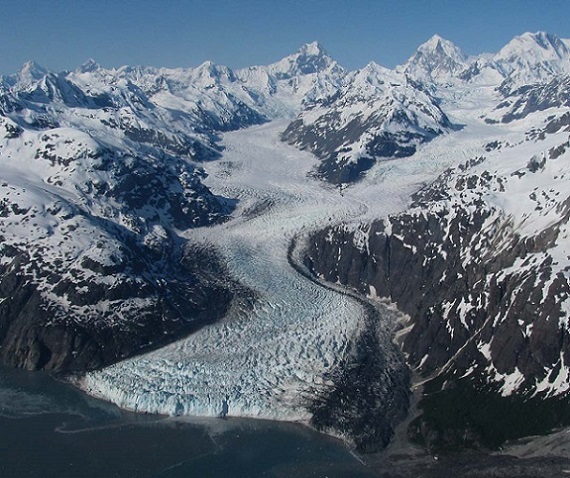
NPS Photo
Glaciers move by a combination of (1) deformation of the ice itself and (2) motion at the glacier base. At the bottom of the glacier, ice can slide over bedrock or shear subglacial sediments.
Fun Fact: Ice flow direction is determined by the glacier surface: a glacier will always flow in the direction the ice is sloping. This means a glacier can flow up hills beneath the ice as long as the ice surface is still sloping downward. Because of this, glaciers are able to flow out of bowl-like cirques and overdeepenings in the landscape.
Ice Deformation
One component of glacier flow is the deformation of the ice itself.
This happens at a microscopic scale, as movement occurs within and between individual ice crystals. They can slide past each other, break and deform, and recrystallize to form new grains.
Motion at the Glacier Bed
Glaciers can flow over beds that are made up of many different kinds of bedrock, sediment, or a combination of rock and sediment.
Many glaciers have water at their bases. This water can come from a number of different sources, including:
- Meltwater from the surface of the glacier that makes its way through crevasses, moulins, and weaknesses in the ice to the glacier bed.
- Ice at the base of the glacier melting due to friction between the moving glacier and its bed.
- Heat emitted from the Earth surface (due to radioactive decay and leftover heat from Earth's formation) that melts the ice.
This water can collect in pressurized pockets between the bedrock and the ice, allowing the ice to slide over its bed. It can also infiltrate subglacial sediments, making them weaker and easier to squish around. When this happens, the glacier can ride on the deforming sediments in its bed.
To learn more about glaciers, glacier features, and glacial landforms, see the Glaciers & Glacial Landforms Page.
Last updated: February 9, 2018
